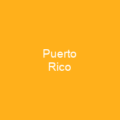A referendum of the status of Puerto Rico was held on November 3, 2020, concurrently with the general election. The referendum was non-binding, as the power to grant statehood lies with the US Congress. Based on the completed unofficial election night count, the option to pursue statehood won the referendum 52. 34%–47. 66%.
About 2020 Puerto Rican status referendum in brief

A 2019 Gallup poll found 83% of Democrats in the US, but only 35% of Republicans, supported Puerto Rican statehood. A 2020 survey by International Policy Digest found that the majority of Democrats showed support for statehood for both D. C. and Puerto Rico. Among Republicans, only 26. 7% supported D.C. statehood and 34. 8% supported Puerto Rico statehood, according to the poll. It is thought that the overall cost of the upcoming referendum will be USD 3.5 million.
You want to know more about 2020 Puerto Rican status referendum?
This page is based on the article 2020 Puerto Rican status referendum published in Wikipedia (as of Dec. 06, 2020) and was automatically summarized using artificial intelligence.







